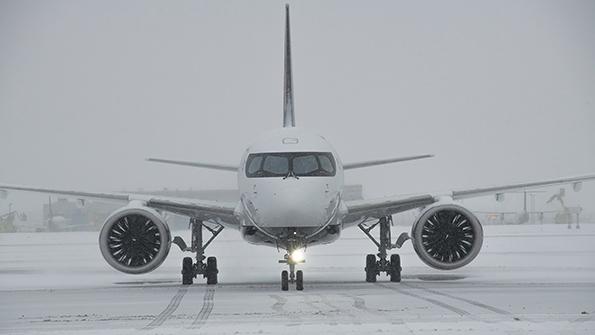Editorial: Bombardier And The Perils Of Government Interference

If ever there were an illustration of government support distorting markets, it would be Bombardier and its C Series, now the Airbus A220. With its decision to exit commercial aircraft, sell its rail transportation unit and focus solely on business aviation, the Canadian company has come full circle.
Bombardier entered aviation in 1986 when the Montreal-based snowmobile manufacturer acquired loss-making Canadair from the Ottawa government for C$120 million (about $90 million at the time). With it came the Challenger business jet, on which government-owned Canadair had spent C$1.5 billion.
Over the next six years, Bombardier acquired Northern Ireland-based Short Brothers and de Havilland Canada for less than $90 million combined, and it received more than $1.6 billion in support from the Ottawa, Ontario and UK governments. It also bought bankrupt Learjet for $75 million, cementing its reputation as a shrewd dealmaker.
What the governments saw in return, in the place of failing businesses, was an aerospace powerhouse that had turned its $255 million in knock-down purchases into $10 billion in annual revenues by 2009 and a workforce that, at its peak of 32,250 in 2001, encompassed more than half the Canadian industry.
Not surprisingly, the governments were willing to continue providing support in the form of both launch aid and export credit. And it was a successful partnership: Bombardier in 2019 said it had repaid $790 million in royalties on $596 million of reimbursable loans received between 1986 and 2009. With 1,950 aircraft sold, the $180 million received in support for the CRJ program had alone repaid $315 million, it said.
But government confidence in Bombardier proved less well placed when it came to the C Series, its first large commercial aircraft. Developing the 110-150-seater, in parallel with the Global 7500 business jet, required much larger loans—a total of $816 million in 2009 and 2017, plus about $150 million from the UK.
The C Series would not have been launched without that government support, and it was not enough. Program costs escalated to more than $6 billion, too much for a company of Bombardier’s size. Flawed execution and competitive plays delayed orders and deliveries. The Quebec government stepped up in 2016 with a $1.3 billion equity investment in the program, but in 2018 Bombardier handed over control of the C Series to Airbus.
The C Series triggered a five-year turnaround effort that has seen Bombardier sell off most of the aviation businesses acquired and built up with that government support, including de Havilland Canada, Shorts, the CRJ and now all of the A220 program, raising more than $3.4 billion in cash and offloading more than $1.1 billion in debt and other liabilities to shore up its finances.
The C Series also triggered a wholesale reshaping of the airliner manufacturing industry, causing Airbus and Boeing to launch the A320neo and 737 MAX families and leading long-time rival Embraer into a planned commercial-aircraft joint venture with Boeing.
There are upsides to this upheaval. Airlines are receiving a new generation of fuel-efficient airliners more quickly than they would have otherwise. Montreal’s aerospace cluster has gained Airbus as another OEM. The A220 is proving itself a good aircraft. And the likelihood of those government loans being paid off has increased.
But with the decision to sell off its rail unit, Bombardier is returning to its aviation roots as a business aircraft manufacturer with a workforce barely larger than it was in the early 1990s. It is hard to see where the company could have taken a different route, but it has been a roller-coaster ride, and the governments involved must take some of the responsibility for enabling the decision that took Bombardier to its heights and brought it back down.
When governments subsidize product development, they play with market forces. They do so at the entire industry’s peril, tilting the competitive landscape with unpredictable results. It would be better for governments to leave industry to carry the risk of developing new products and instead focus their support on developing the enabling technologies. The payoff could be greater. The need certainly is.





Comments
Great engineering accomplishment. And the government subsidies will be repaid, unlike the A380.
Airbus will be the one profiting from Bombardier's and Canada's endeavors.
I hope karma will reward Bombardier great success in bizjets. Who knows, another successful airliner will again evolve from these bizjets like the Canadair.
Rene Abad
AirPino PH
Just from the piece’s narrative, it is clear that government support over the decades was a huge success. Even the early support was repaid at a premium. As another example, how about Airbus, a government created and supported entity which has successfully overthrown Boeing to become the largest airliner manufacturer?
Government support to the C Series is only 1/8 of Bombardier’s loss on the program. It may have supported the launch decision but was clearly not determinative.
A better explanation for the hubris of entering the Boeing/Airbus arena would be the dual class share structure and the widely held view that family businesses go from wild success to failure in three generations.